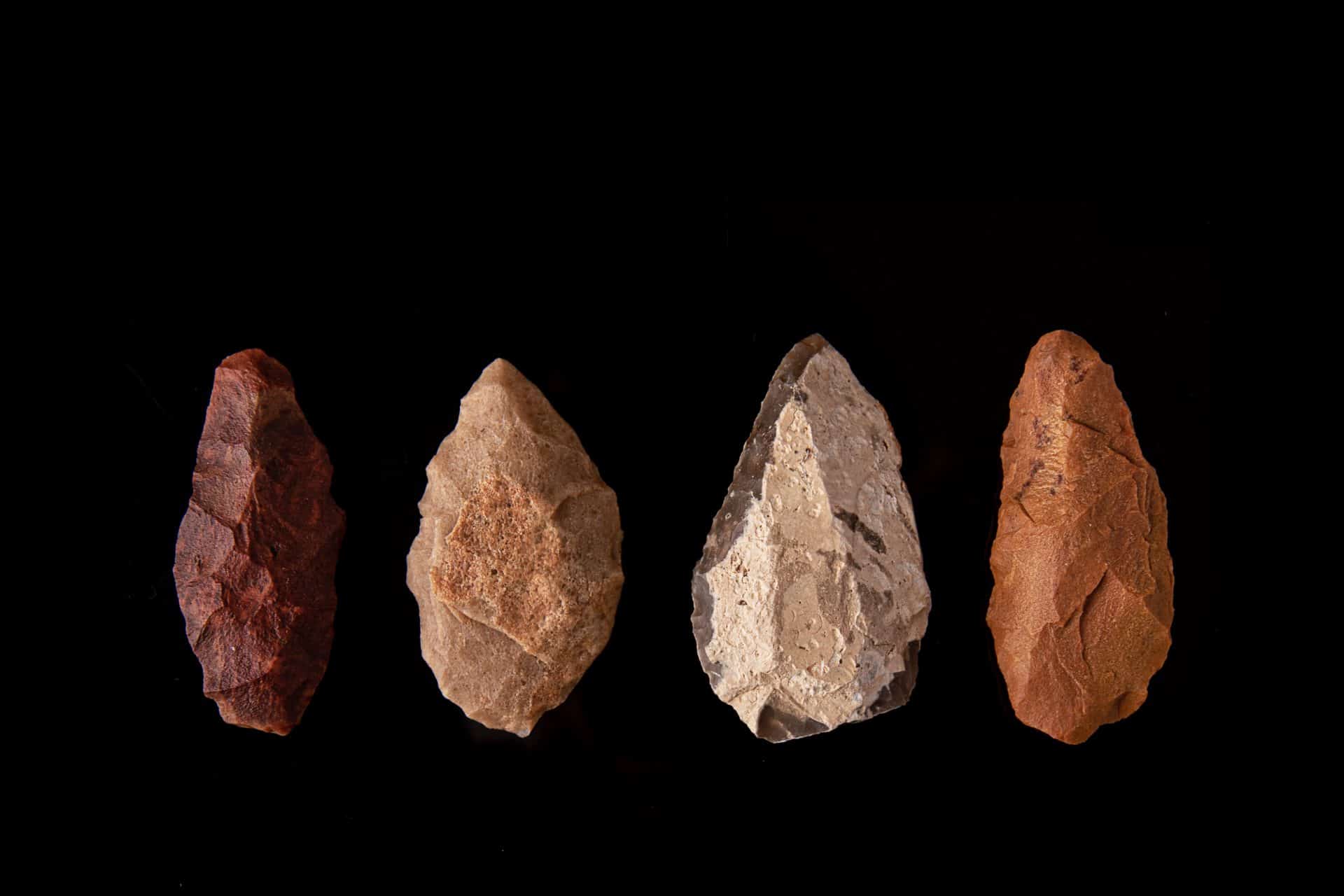Archaeologists classify stone tools into groups called “Industries”, or Grahame Clark’s “Modes”, with the latter having the general time frame of Pre-Mode 1 to Mode 5.
Pre-Mode I tools were made around the Lake Turkana region of Kenya 3.3 million years ago (mya). The surrounding volcanic ash from which the tools were recovered, along with archaeomagnetic dating shows that the tools were manufactured by Australopithecus Afarensis (“Lucy”).
Mode I, the Oldowan Industry, consisted of simple stone tools used for percussion (hitting). They were mainly a core stone that was struck by a hammer stone e.g. river rocks that could easily be held in the hand. The earliest examples of Oldowan technology dates to 2.6 mya which were found in the Olduvai Gorge in Tanzania. Homo Habilis produced them until around 1.8 mya when Homo Erectus predominated.
Mode II, the Acheulean Industry, began around 1.7 mya and differed from the Oldowan tools in having a bi-face. The hand-axe was the predominant tool and was used for butchering animals as opposed to killing them. A slab was knocked off a larger rock and the producer removed flakes to create a core stone. Once the core stone was free, two sides of the core were carefully removed and shaped to leave a sharp, thin edge for slicing.
Mode III, the Mousterian Industry were smaller and sharper than their Acheulean counterparts and were mainly associated with Neanderthals. The Mousterian Industry lasted for 50,000 years until approximately 250,000 years ago. The Lavallois Technique, (preparing core pieces to rework into flakes) was used in the manufacture of Mousterian tools.
Mode IV, the Aurignacian Industry, was 50,000-10,000 years ago (kya), in which the Aurignacian Culture, also know as European Early Modern Humans or Cro-Magnon created long blades instead of flakes.
Mode V saw very small microlithic blades which measured around 1 cm in length. The blades date from 350-3 kya in Europe, Africa, Asia and Australia, and were often attached to a wooden or bone shaft (sometimes in large quantities) to make elaborate tools or weapons.
Many stone tools are still in use today. Flint was still used as recently as the mid-1900s to produce flintlock gun mechanisms. Obsidian blades are still preferred by many surgeons thanks to its extremely fine and sharp edge, whilst many useful items such as fire starters and mortar and pestles are made from various types of stone.
Written by Julie St Jean
Header Image Credit : Shutterstock





